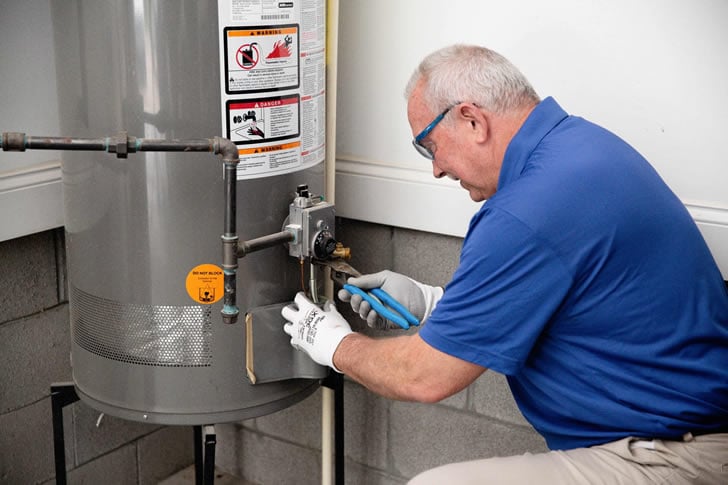Unveiling the Impact of Nbr 13531
This article delves into the implications of Nbr 13531, a crucial identifier in various technical domains. Its significance can be deduced from its applications across multiple disciplines, fostering innovation and maintaining standards. Understanding this identifier's role in technology and its top practices is essential for industry professionals aiming for excellence in implementation.

Understanding Nbr 13531 and Its Relevance
Nbr 13531 holds a pivotal place in several technical sectors. As an identifier, it connects a broad range of applications and technical specifications. Although not a commonly recognized term outside specific professional circles, its influence stretches across fields that demand attention to detail and stringent adherence to standards. From construction and engineering to IT systems and software development, this identifier often assures that specifications are met and maintained. The increasing complexity of modern systems demands a framework like Nbr 13531 to ensure all parts function harmoniously, which ultimately enhances efficiency and reliability.
The Industrial Role of Nbr 13531
For professionals in technology, engineering, and related fields, Nbr 13531 is more than a mere number. It serves as a comprehensive guide toward ensuring that processes and outputs achieve desired objectives and conform to predetermined standards. The identifier often acts as a reference point, aligning various components of a complex system and guaranteeing their compatibility and effectiveness. By adopting Nbr 13531, organizations can facilitate clearer communication among stakeholders, thereby minimizing misunderstandings that often arise from technical jargon and disparate practices.
Why Nbr 13531 Matters
The relevance of Nbr 13531 is twofold. Firstly, it standardizes practices, making integration across different components smooth and sustainable. Standardization is especially crucial in collaborative environments, where multiple parties may be involved in a single project. Secondly, it underpins the verification processes that are crucial for maintaining quality and safety across industries. Whether it's determining the compatibility of materials in construction or ensuring that a software update will seamlessly mesh with existing systems, Nbr 13531 plays an integral role. The implications of this identifier extend beyond mere compliance; it embodies a commitment to excellence and continuous improvement.
Technical Specifications and Compliance
When discussing compliance and specifications, it's imperative to understand the technical vocabulary associated with Nbr 13531. This identifier may align with different sets of criteria depending on its application area, often dictating the performance indexes, safety requirements, and efficiency parameters of a given component or system. The criteria set forth by Nbr 13531 are often informed by both industry standards and innovative practices, ensuring that they remain relevant and effective. Moreover, compliance with Nbr 13531 can serve as a competitive advantage, showcasing an organization’s dedication to upholding the highest levels of quality and precision in its operations.
Common Applications of Nbr 13531
Nbr 13531 frequently appears in documentation of both hardware and software systems. Its applications are vast, but here are a few common scenarios where it proves invaluable:
- Construction and Engineering: Ensures material compatibility and safety standards. Particularly in this sector, adhering to identified standards can significantly reduce liabilities and increase project success rates, as potential issues are identified and addressed proactively.
- Information Technology: Facilitates smooth software updates and system integrations. In an industry where software versions evolve rapidly, maintaining compatibility between systems is essential for operational continuity.
- Manufacturing: Guarantees that components meet production safety and reliability measures, contributing to increased operational efficiency and reduced waste.
Furthermore, the adoption of Nbr 13531 across these diverse sectors indicates a broader trend towards standardized practices that ultimately propel innovation, as organizations can focus more on their core competencies rather than getting bogged down in compatibility issues.
Implementing Nbr 13531: A Step-by-Step Guide
| Step | Description |
|---|---|
| 1. Assessment | Identify the application area requiring Nbr 13531 integration. This initial step requires thorough discussions among stakeholders to understand the scope and implications of integration. |
| 2. Alignment | Ensure that all participating components and systems conform to the required specifications. This may involve benchmarking existing systems or materials against Nbr 13531 criteria. |
| 3. Verification | Test compatibility and efficiency with existing systems. This often requires extensive testing protocols to ensure that all expected functionalities work as intended. |
| 4. Documentation | Record compliance and performance metrics for future reference and audits. Maintaining thorough documentation not only provides a snapshot of adherence to standards but also serves as a valuable tool during inspections or audits. |
Each of these steps is crucial for successful implementation. However, it is also essential to foster an organizational culture that values adherence to such identifiers. This can be achieved through training, workshops, and continuous improvement initiatives that empower employees at all levels to understand and embrace Nbr 13531.
Challenges and Considerations
While Nbr 13531 is instrumental, it comes with challenges. Interpreting technical standards necessitates deep expertise, and misapplication may result in inefficiencies. Organizations may encounter resistance to change, particularly if existing practices have been in place for extended periods. Professionals must remain updated with the evolving standards associated with this identifier, as industry shifts can bring new requirements and adaptations. Therefore, ongoing education and training programs should be instituted to ensure that all team members are proficient in Nbr 13531 and its implications.
Another significant consideration is the cost associated with compliance. Adhering to these standards may involve initial investments in training, system upgrades, or new equipment. However, these costs are often outweighed by the long-term benefits of efficiency, productivity, and reduced risk of errors or accidents.
FAQs
- What is the primary purpose of Nbr 13531?
Ensure compatibility and compliance with industry standards across various technical domains to promote best practices and effective integration. - Where is Nbr 13531 very commonly used?
In fields such as engineering, IT, and manufacturing, where standardization is crucial for ensuring quality and safety. - Can Nbr 13531 be applied globally?
Yes, provided that its standards are recognized and adhered to within specific industry contexts, facilitating international collaboration and compliance. - How often are updates required?
Regular assessment is recommended to align with any modifications in industry standards, ensuring that all systems and practices remain relevant and effective. - What are the consequences of not adhering to Nbr 13531?
Non-compliance can lead to serious repercussions such as project delays, increased costs, safety hazards, and potential legal liabilities due to unsafe practices or faulty products.
Conclusion
Deciphering Nbr 13531 reveals a world of structured excellence and precision, invaluable for practitioners aiming to align their work with industry standards. The significance of this identifier goes beyond mere compliance; it reflects a broader commitment to innovation, safety, and success within technical fields. For specialized professionals, it is imperative to embrace its protocols to foster an environment where innovation, efficiency, and safety are prioritized. Ultimately, the strategic implementation of Nbr 13531 can empower organizations to build a more resilient future, marked by collaboration and excellence in every aspect of their operations.
As industries continue to evolve and grapple with new challenges and opportunities, adherence to standards such as Nbr 13531 will remain vital. Therefore, professionals must not only familiarize themselves with these standards but also advocate for their integration across all relevant operations, driving their organizations toward a future of sustainable success. This ensures that businesses can respond adeptly to market changes while maintaining the integrity and safety that are essential for both their operations and the communities they serve.









